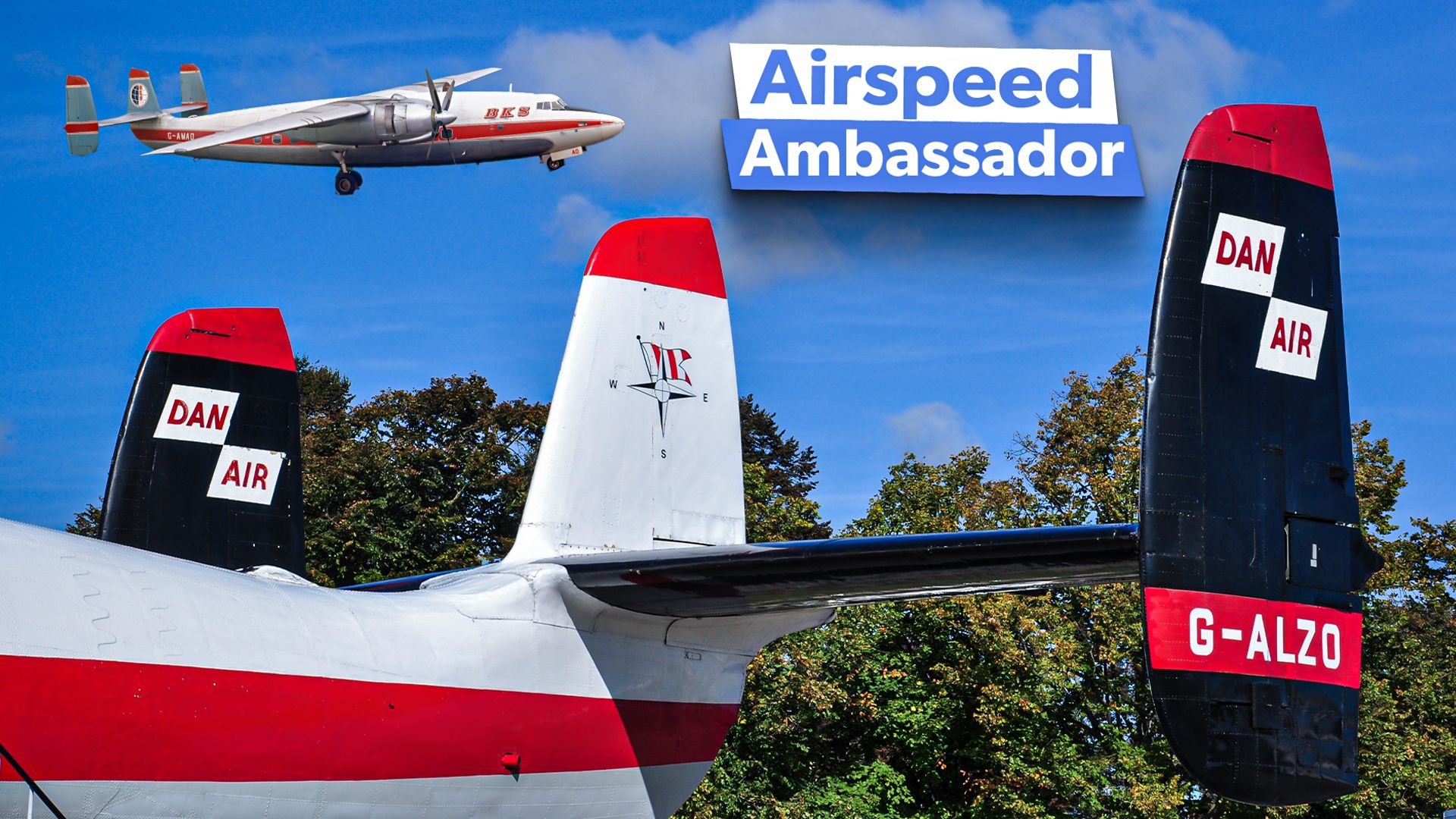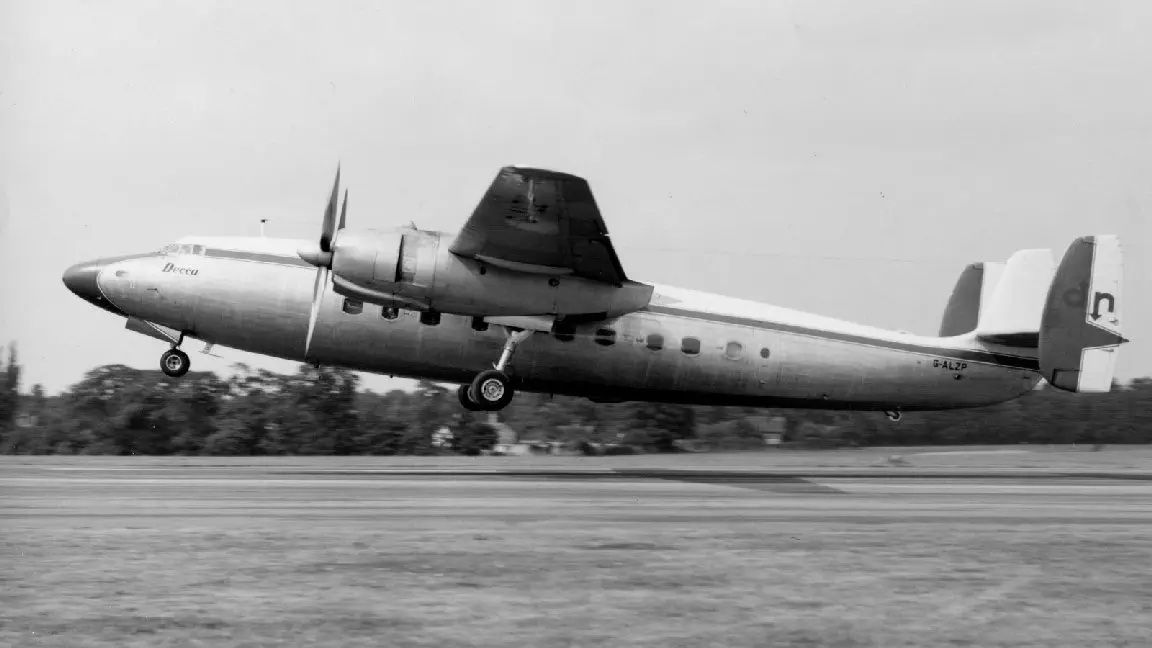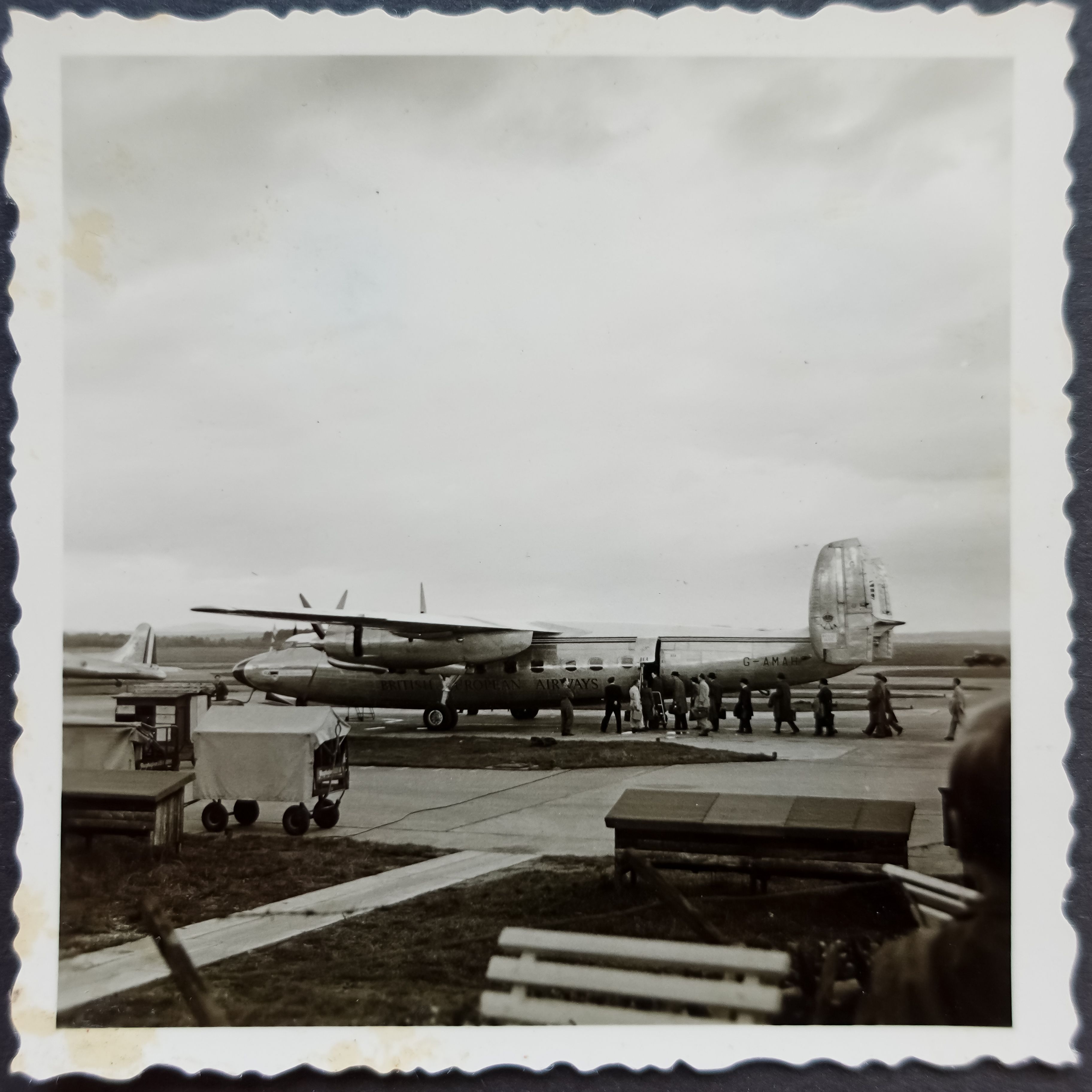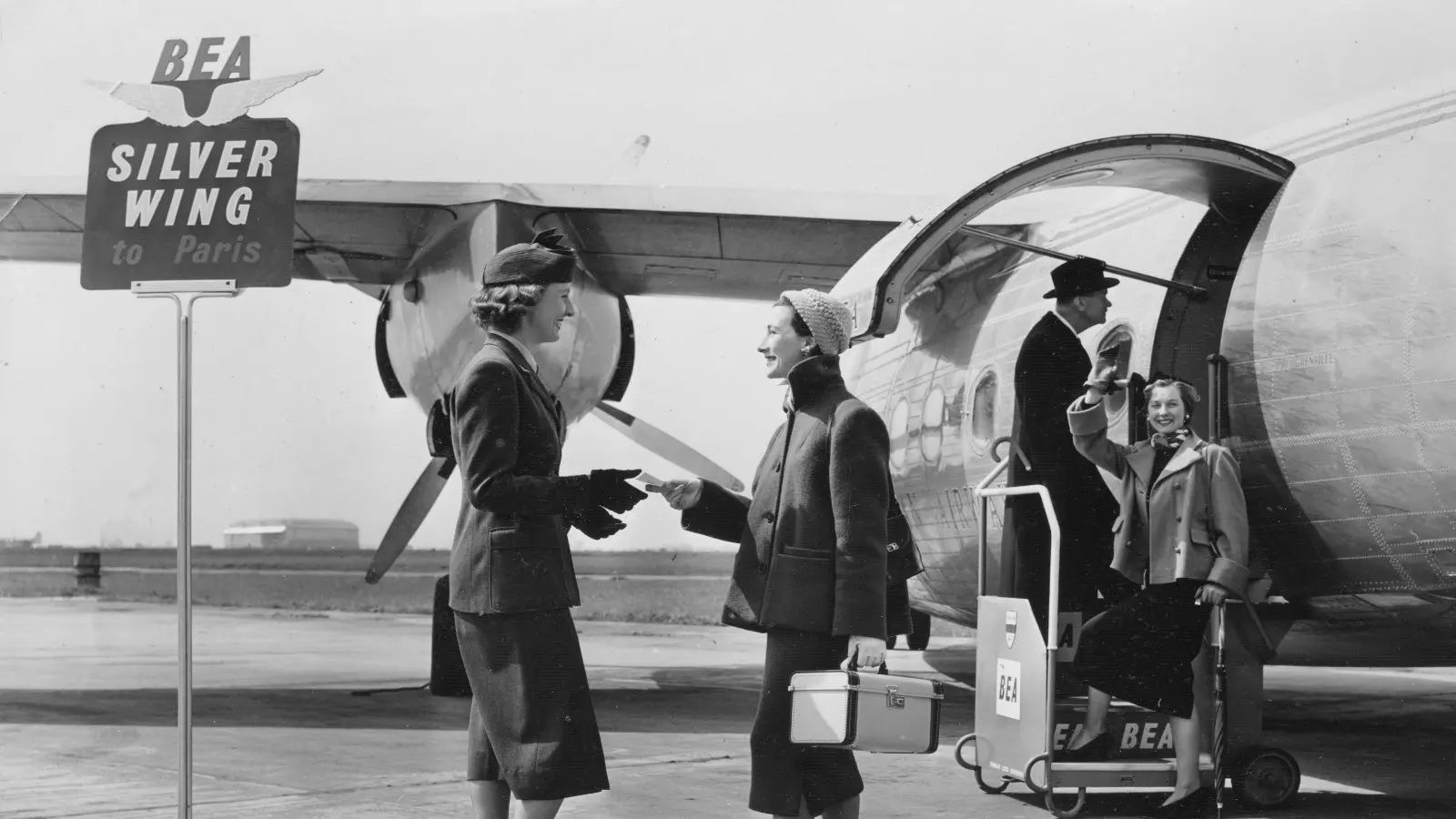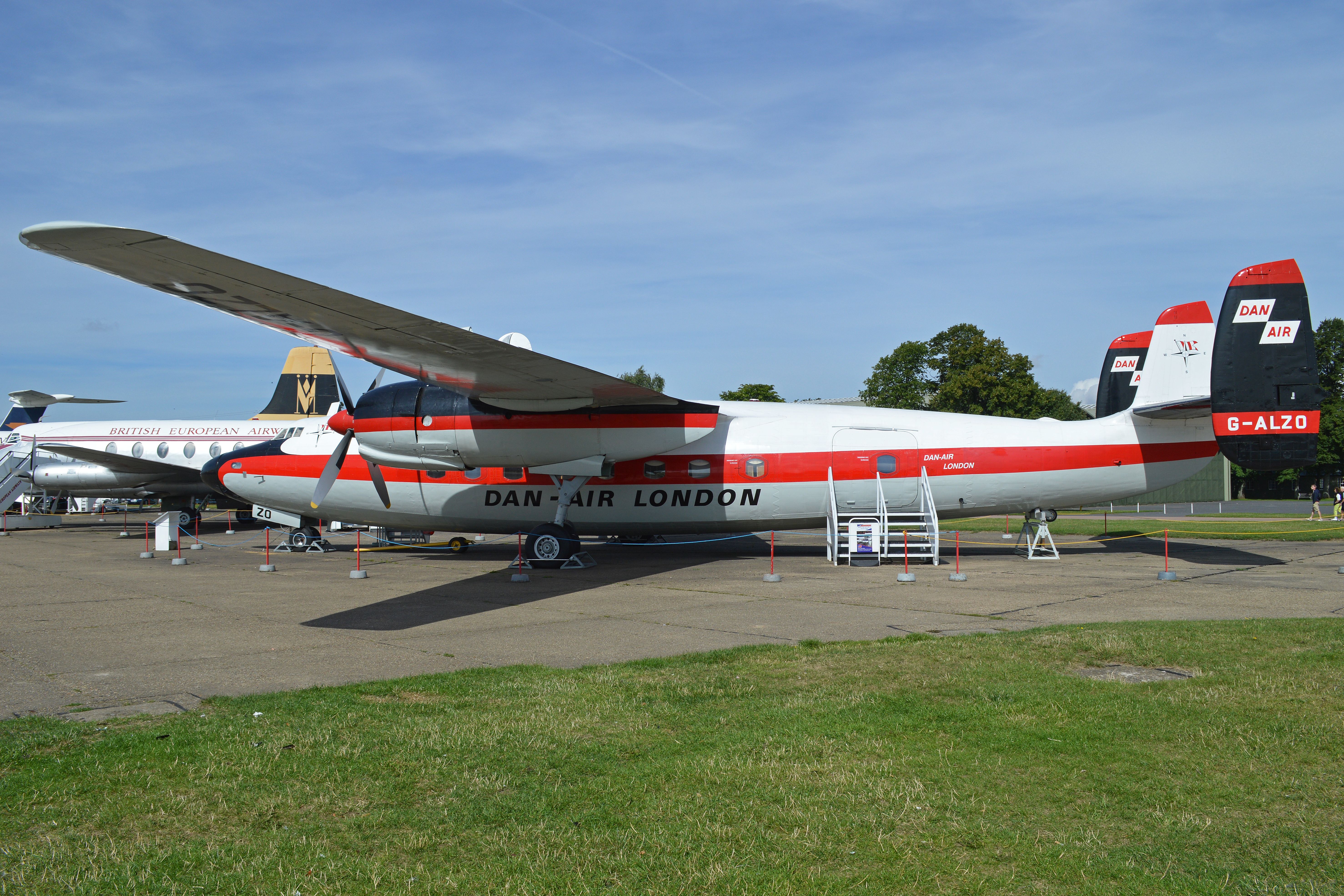Summary
- The British Brabazon committee developed the sleek Airspeed Ambassador to compete with the American DC-3.
- Despite the elegant design, only 23 Ambassadors were manufactured due to insufficient demand.
- The Ambassador retired due to emerging jet-age competitors and an outdated design.
By the end of the Second World War, the British government had begun to identify that significant advances in aviation technology during the war would lead to major leaps forward in terms of civil aviation. To keep pace, Westminster appointed the Brabazon committee, an organization with the single goal of promoting and supporting British civil aircraft production following the conclusion of the War.
While the organization did have many goals in mind (such as constructing the wildly ambitious Bristol Brabazon disaster), they were also tasked with keeping pace with American manufacturers. As a result, the committee decided to target the development of a medium-sized twin-engine
aircraft that could compete in similar short and medium-haul markets with the American Douglas DC-3, which had become popular with operators around the globe.
Photo: BAE Systems
The aircraft that resulted was undeniably one of the most elegant planes of the era and was given an equally grandiose name to accompany its innovative, yet conventional, design. The Airspeed Ambassador, as the thirty-seat aircraft would be named, would fly for the first time in 1947.
Despite the bold expectations for this aircraft to revive British domestic aircraft production, the Ambassador fell far short of expectations, with only 23 ever leaving the manufacturer’s assembly lines. Let’s take a deeper look at the story of the Airspeed Ambassador, how it felt short of its lofty expectations, and what kind of legacy it leaves behind.
Origins and developmental history
The Brabazon Committee’s specification Type IIA, which called for a piston-powered short-haul aircraft, would eventually come to identify a proposal from Airspeed Ltd as the most promising for developing this plane. The design put forward by Airspeed called for an elegant, high-wing airliner with a triple tail fin construction.
The original designer of the aircraft was Arthur Hagg, who worked on the plane from Fairmile Manor in Surrey starting in 1943. This location was located not far from the wartime base of operations for Hawker, according to manufacturer BAE Systems.
Despite the proximity of these two major manufacturers, there are relatively few records of any social interactions between the rival organizations. Airspeed would eventually go on to be purchased by de Havilland in 1940, although the Airspeed branding would remain intact for the ambassador model.
The early years of the Ambassador’s development were marred with delays, as the aircraft suffered setbacks during pressurization testing. The earlier Bristol Hercules radial piston engines would eventually be swapped out for larger and more capable Bristol Centaurus powerplants.
By the time the first two prototypes were completed in 1947, the aircraft had already gained a reputation for its elegant design. In R.G. Grant’s 2002 book, The Complete History of Aviation, the author describes the aircraft as:
One of the most elegant aircraft ever built.
Shortly after successful flight tests were completed, British European Airways (BEA), one of the precursors to today’s British Airways, placed a £3 million order for 20 aircraft in September 1948. With this order, the British manufacturer was optimistic that a profitable commercial future for the Ambassador was in store.
Photo: BAE Systems
The aircraft even impressed crowds at the 1948 Farnborough Airshow, where the plane performed an impressive flying display, all with only one functional engine. Here are some specifications for the Airspeed Ambassador:
|
Category |
Airspeed Ambassador specification |
|---|---|
|
Maximum capacity |
60 passengers |
|
Maximum takeoff weight (MTOW) |
52,000 lbs |
|
Maximum speed |
312 miles per hour |
|
Maximum range |
1,950 miles |
Commercial service entry and failure to secure additional orders
BEA was quick to notice the commercial potential of the ultra-sleek aircraft and sought to attract affluent travelers with a new class of service. On March 13th, 1952, the aircraft entered commercial service with BEA, which advertised the aircraft as “Elizabethan Class.”
Within just a couple of years, the Ambassador was deployed across BEA’s network, at one point even becoming its most-used plane. However, the aircraft failed to secure any additional orders, and, as a result, Airspeed decided to end the plane’s production after just six years when the last Ambassador rolled out of the hangar in 1953. A couple of key factors contributed to the plane’s commercial demise:
- The introduction of newer, more efficient, and more capable aircraft like the Vickers Viscount
- The dawn of the jet age and the era of turboprop airliners were just around the corner
As a result, airlines did not see the value in investing heavily in what was essentially a rather outdated airliner. By 1958, even BEA had retired the aircraft, completing its last scheduled service on July 20th of that year. Many Ambassadors did remain in service, however, having been sold to smaller carriers, many of which focused only on charter operations.
The two Ambassador prototypes had an interesting afterlife, serving as a testbed for several turboprop engines. These aircraft played a major role in developing all the following engines:
- Bristol Proteus 705
- Rolls-Royce Tyne
- Rolls-Royce Dart
At the end of the day, the Airspeed Ambassador was an excellent aircraft for the 1940s, when it was designed. It offered a sleek design and impressive performance, all while being a British-built aircraft that should have been appealing to domestic airlines.
However, this plane was introduced during the 1950s, when more powerful, longer-range aircraft were all the rave. Ultimately, the Ambassador was simply built for an era that no longer existed, with American models beating it to the market on account of repeated production delays.

